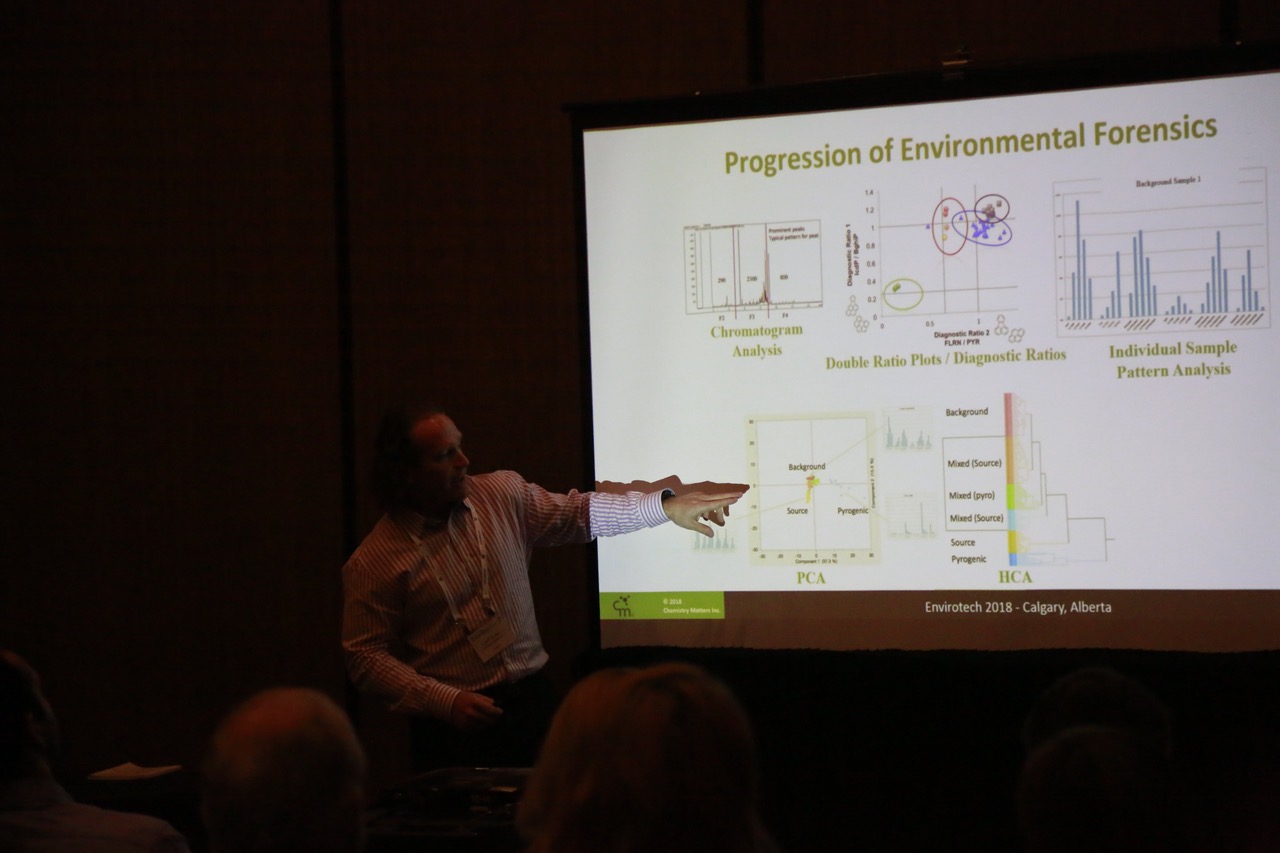
Dr. Sandau to present on Source Apportionment at INEF 2018
- Date: June 25, 2018
- Location: Salt Lake City, Utah, USA
Dr. Sandau and the Chemistry Matters team are proud to be presenting and/or co-authors of 3 presentations at the 2018 International Network of Environmental Forensics (INEF) hosted by Salt Lake City and the University of Utah. Dr. Sandau will be presenting Examining Uncertainty Associated with Positive Matrix Factorization Source Apportionment Models on Monday June 25 at 2:00PM. The conference takes place June 25-27 and the abstract of the presentation is below.
In addition to this presentation, Dr. Sandau will present Forensic PAH Fingerprinting Techniques and Source Apportionment for Oil Spills and Dr. Megson will present How many PCBs are there in the environment and where do they come from?
Examining Uncertainty Associated with Positive Matrix Factorization Source Apportionment Models
Court D Sandau1,2, Lacey Harbicht1, Phil Richards1, Khalid Lemouji2
1 Chemistry Matters Inc., Calgary, AB, csandau@chemistry-matters.com
2 Statvis Analytics Inc., Edmonton, AB, court@statvis.com
Abstract:
Many contaminated sites and superfund sites have mixed plumes or mixtures of contaminants of concern from multiple potential sources. Examples of mixed plumes could include mixed free phase petroleum plumes (e.g. condensate) or polycyclic aromatic hydrocarbons (PAHs) from crude oil spills mixing with upstream background sources or local anthropogenic sources (storm water runoff) of PAHs in sediments.
Although multivariate statistical analysis such as principal component analysis and hierarchical analysis provide insight on potential end members and likely source patterns, they are unable to determine the amount of each of the contributing sources in each of the samples (source apportionment).
Positive matrix factorization can be used to determine the number and chemical fingerprints of the sources of contaminants present on the site. In addition, these statistical tools can also apportion the amount of contaminants in each sample, thereby allowing liability to be distributed according the chemistry of the contaminants and those responsible for the release. Apportionment is important for litigious cases as it allows the calculation of who should pay for what portion of the cleanup. When the cost of the cleanup is high, even small percentage responsibilities can be worth millions of dollars which raises questions about the uncertainty around apportionment percentages assigned to samples and potentially responsible parties.
This presentation will use real case studies as well as experimental mixtures to explore the uncertainty associated with PMF source apportionment and potential methods to define the uncertainty so that results can be relied upon and better understood for legal proceedings.
Lawyers, regulators and environmental professionals involved in superfund sites, spill monitoring and liability determination will find this presentation educational in how these statistical models are able to determine sources and amounts of those sources of contaminants on site and potential address the uncertainty that accompanies these models.
How many PCBs are there in the environment and where do they come from?
David Megson1,2, Rhys Jones3, Glenn Johnson4, Thomas Brown5, Courtney Sandau2
1 Manchester Metropolitan University, Manchester UK.
2 Chemistry Matters, Alberta, Canada
3 Waters Corporation, Manchester, UK
4 University of Utah, Utah, U.S.A.
5 Scottish Association for Marine Science (SAMS), Oban, Scotland
Abstract:
A significant limitation with some PCB forensic cases is that they use analytical methods that only target a subset of specific PCBs. There can be a huge variation in the PCBs targeted by different methods with many established to focus solely on co-planar PCBs (e.g. WHO 12) to assess human health risks, or on PCBs that are abundant in Aroclors (e.g. i7 & i3 PCBs) to estimate total concentrations. This highly filtered data is not ideal from a forensics perspective and can result in the data analyst missing PCB contamination from highly weathered and non-aroclor sources.
One of the key questions often asked in forensic investigations is how many PCBs are present in the environment and where have they come from? This presentation will provide a brief overview of known aroclor and non-aroclor sources of PCBs. It will discuss which congeners are commonly detected in the environment and will present data obtained from marine animal samples analysed by GC-qqqMS and GCxGC-ToFMS. The results show that over 150 congeners were detected in the samples, with conservative estimates indicating that approximately 5% of the total PCB concentration in some samples originated from non-aroclor sources.

 Provides expert support to projects involving litigious or contentious subjects. These expert witness services are founded on chemistry principles and proper application of scientific methods.
Provides expert support to projects involving litigious or contentious subjects. These expert witness services are founded on chemistry principles and proper application of scientific methods.